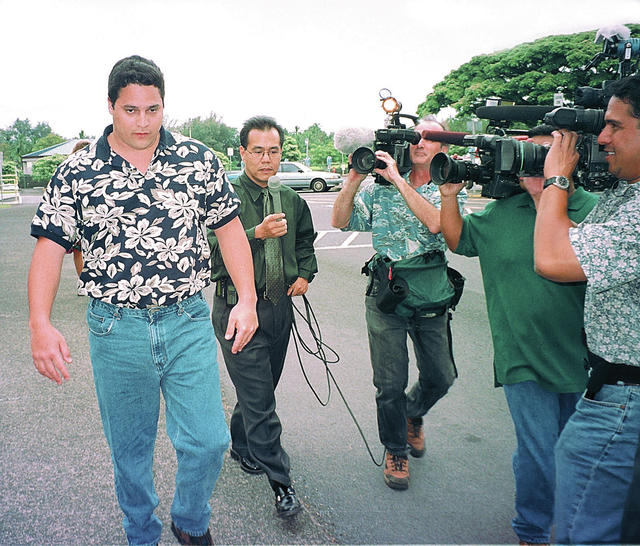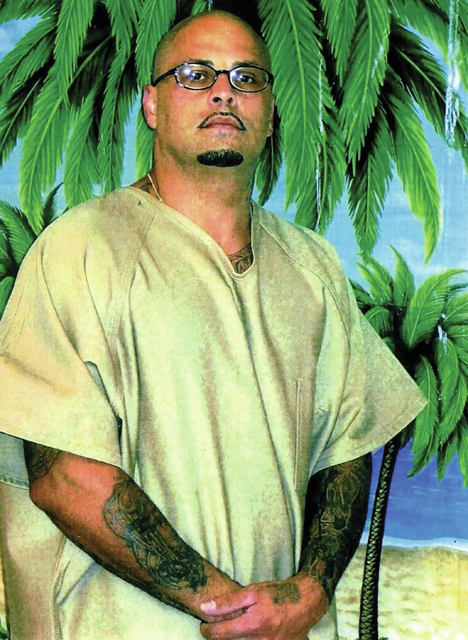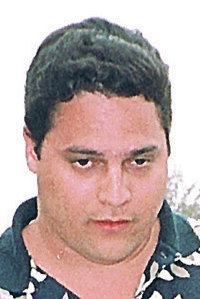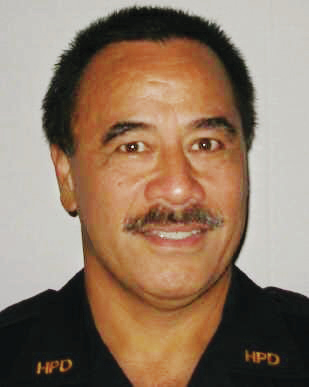The Hawaii Innocence Project has taken up the case of one of three men convicted for the 1991 rape and murder of Dana Ireland.
Court records indicate HIP, which is affiliated with the University of Hawaii’s William S. Richardson School of Law, has been representing Albert “Ian” Schweitzer since at least 2007.
Brook Hart, a prominent Honolulu criminal defense attorney and volunteer lawyer for HIP, last week confirmed the organization’s involvement.
“We are representing Ian Schweitzer, and are seeking his vindication in the matter, but we’re in the process of doing our background research,” Hart said. “… I’m in contact with (Hawaii County Prosecutor) Mitch Roth about the matter, but I think it’s premature to discuss the details publicly, except to say we have a strong belief that Albert Ian Schweitzer is not guilty of the offense … that he was convicted of.”
Another group, Judges for Justice, is also calling for an official review of Schweitzer’s case, as well as those of co-defendants Frank Pauline Jr. and Shawn Schweitzer. The latter is Ian Schweitzer’s younger brother.
Retired King County Superior Judge Michael Heavey, who heads the Seattle-based group that worked to overturn Amanda Knox’s internationally publicized murder conviction in Italy, believes the evidence points to a single attacker and away from those convicted in the Ireland case.
Ian Schweitzer is serving life with a minimum of 130 years for the slaying of 23-year-old Ireland on Christmas Eve 1991 in lower Puna. Pauline was sentenced to life with a minimum of 180 years, despite recanting his confession that also implicated the Schweitzers. Shawn Schweitzer, who was 16 when the crime occurred, became a witness for the state and was sentenced to five years probation and a year in jail, already served, for manslaughter.
Prosecutors stipulated at trial that DNA found in semen inside Ireland’s body and on the hospital gurney on which she died did not match any of the defendants, and a bite mark found on Ireland didn’t match dental impressions of any of the defendants.
According to court records, Hart requested post-conviction DNA testing on evidence in February 2007, which was later sealed by the court. He confirmed the test includes “touch” DNA testing on a Jimmy Z T-shirt for male DNA, a type of testing not yet developed when Pauline and Ian Schweitzer were tried in the late 1990s.
Jurors were told the bloody shirt, a key piece of evidence, belonged to Pauline.
Hart said male DNA was found, “and it excludes Ian Schweitzer.”
“None of Mr. Schweitzer’s DNA matches any of the DNA found with the gurney or on the T-shirt,” he said. “We’re trying to find out whose DNA it is, and that’s why we’ve asked Mr. Roth to do what’s necessary to run it through, or get the FBI to run it through its databases, but so far that matter hasn’t been resolved.”
Roth said he submitted the DNA tests, which court records state were done by Reliagene Technologies of New Orleans, to the FBI for possible inclusion into its Combined DNA Index System, or CODIS, database.
“We sent that information with the DNA marker that they gave us to the FBI, CODIS, to determine if it could go in (to the database),” he said. “… The FBI called us back and we expect a letter saying they could not put it into CODIS because it was not done in accordance with the law that covers the CODIS database.”
Hart said he “can’t answer … at this point” whether the touch DNA from the shirt matches the DNA from the semen.
“It’s premature to have a thorough discussion about this,” he said. “We do not try cases in the newspaper.”
The Hawaii Tribune-Herald also contacted Schweitzer’s mother, Linda, who referred questions to Hart.
Heavey believes the touch DNA taken from the T-shirt and the seminal DNA “match, and they’re not Frank Pauline.”
“We know that the sperm/semen DNA didn’t match any of the three at the ’99 trial, and … Dr. Ed Blake (the defense DNA expert at trial) was saying how can people be satisfied with this? The guy that left the sperm is still out there,” he said.
Pauline, who said he confessed to help his half-brother, John Gonsalves, obtain a lighter sentence on a drug charge, now says neither he nor the Schweitzers were involved.
Pauline wrote a letter to the Hawaii Tribune-Herald, published in its entirety on Dec. 31, 2011. An excerpt, containing Pauline’s spelling and punctuation, states: “It’s clear someone raped Ireland and left his DNA in her. Well who doe’s that DNA belong to? … How’s about making an effort to find the person/person’s who raped Ireland?”
Honolulu attorney Clifford Hunt, who defended Pauline at trial, said in 2011 he’s convinced his former client is innocent, and that authorities “are not making any effort, as far as I know, to find who the real killer is.”
Heavey said he believes the attack was a “disorganized sexual homicide.” He said those cases are almost always a single attacker, and believes the perpetrator lived close to Dana Ireland’s sister, Sandy, and was likely a Peeping Tom who stalked Dana Ireland.
“They are overcome by their lust. They get the victim alone, and they attack,” Heavey said about this type of criminal. He said this type of attacker is unlikely to re-offend.
Ireland was run down by a vehicle while riding her sister’s bicycle on the entry road to Kapoho Vactionland and then taken to Waawaa where she was raped and left to die. Heavey said tire tracks left at the collision scene were too wide to have been made by Ian Schweitzer’s 1957 Volkswagen Beetle.
“Four witnesses saw a gray Japanese pickup truck with a single man,” he said “Two of them saw him putting a pair of white legs into the truck and then putting foliage over her. Another witness drove by crime scene one, where she was whacked, and saw a single man, pickup truck, at the scene, putting foliage into the truck — I think, to cover up the body. And a fourth saw a man driving away fast from crime scene two in a gray or white pickup truck.”
Heavey wants Roth to appoint an attorney for Pauline and to have touch DNA testing done on the clothing Ireland was wearing.
“I don’t think any DNA from Frank Pauline, or any DNA from Ian Schweitzer or Shawn Schweitzer are on her underpants or on her shirt,” he said. “If so, I think we would fold our tent and go home.”
Roth said he doesn’t know if the DNA questions can be answered.
“At this point, I don’t know of any evidence that’s available to be tested that hasn’t been tested that hasn’t had any possibility of contamination,” he said. “If you only have a certain amount of samples, and those samples have been tested and used in court, you can’t re-test the samples because now that other people have touched it, those samples are contaminated. And those samples couldn’t go into CODIS, either.
“I don’t think there’s anything that’s going to come back at this stage that’s going to change our mind,” he added. “From what we’ve seen … they’ve not convinced us to reopen this.”
Lincoln Ashida, a private attorney who was one of two deputy prosecutors at trial — the other was Charlene Iboshi, who later became county prosecutor — said he’s “fine” with the case being revisited.
“Anybody, any organization can look at the records in this case,” he said. “Nothing was ever suppressed or hidden from the jury. Everything was considered, and we believe the jury made the right decision based on the evidence.”
Email John Burnett at jburnett@hawaiitribune-herald.com.

















